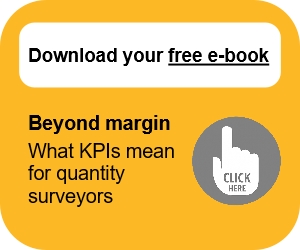Cost Value Reconciliations (CVR)
Cost Value Reconciliation (CVR) is a crucial financial management tool used to monitor and control project finances. It involves comparing the actual costs incurred on a construction project with the value of work completed to date. This comparison helps ensure that projects remain financially viable and highlights any discrepancies between costs and revenue.
Actual costs incurred might include direct costs (materials, labour, subcontractor fees, and any other expenses directly related to the construction work) and indirect costs (overheads, administrative expenses, and other costs not directly tied to specific project activities.)
The value of work completed (value earned) might include work certified (the value of work that has been completed, inspected, and approved by the client or project manager) and work not yet certified (the value of work that has been completed but not yet certified).
Cost vs. value compares the costs to date (the total actual costs incurred up to a specific date) and the value to date (the total value of work completed and certified up to that same date).
By comparing costs and value, CVR helps assess the profitability of a project. This analysis can inform decision-making and adjustments to project execution strategies. CVR helps track the financial health of a project by continuously comparing costs against the value of work done. This enables early detection of cost overruns and other financial issues. Understanding the timing of costs and revenue is critical for managing cash flow. CVR provides insights into when payments are due and when revenue will be received, aiding in effective cash flow planning.
CVR highlights financial risks early, allowing project managers to take corrective actions to mitigate potential financial losses. Regular CVR reports provide transparency and accountability, ensuring that stakeholders are informed about the project's financial status.
The process of CVR might include:
- Gathering detailed information on costs incurred, including invoices, receipts, payroll records, and other financial documents.
- Assessing the value of work completed, often through site inspections and progress reports. This might involve input from quantity surveyors and project managers.
- Comparing the actual costs against the value of work completed. Analysing any discrepancies and investigate the reasons behind them.
- Generating CVR reports that summarise the financial status of the project. These reports typically include key metrics such as cost to date, value to date, profit margins, and cash flow projections.
- Reviewing CVR reports with project stakeholders and take necessary actions to address any issues identified. This could involve adjusting project plans, renegotiating contracts, or implementing cost-saving measures.
[edit] Related articles on Designing Buildings
Featured articles and news
Homes England creates largest housing-led site in the North
Successful, 34 hectare land acquisition with the residential allocation now completed.
Scottish apprenticeship training proposals
General support although better accountability and transparency is sought.
The history of building regulations
A story of belated action in response to crisis.
Moisture, fire safety and emerging trends in living walls
How wet is your wall?
Current policy explained and newly published consultation by the UK and Welsh Governments.
British architecture 1919–39. Book review.
Conservation of listed prefabs in Moseley.
Energy industry calls for urgent reform.
Heritage staff wellbeing at work survey.
A five minute introduction.
50th Golden anniversary ECA Edmundson apprentice award
Showcasing the very best electrotechnical and engineering services for half a century.
Welsh government consults on HRBs and reg changes
Seeking feedback on a new regulatory regime and a broad range of issues.
CIOB Client Guide (2nd edition) March 2025
Free download covering statutory dutyholder roles under the Building Safety Act and much more.
Minister quizzed, as responsibility transfers to MHCLG and BSR publishes new building control guidance.
UK environmental regulations reform 2025
Amid wider new approaches to ensure regulators and regulation support growth.
BSRIA Statutory Compliance Inspection Checklist
BG80/2025 now significantly updated to include requirements related to important changes in legislation.























